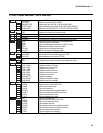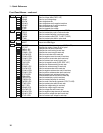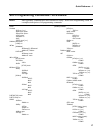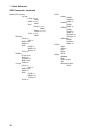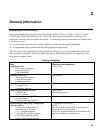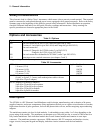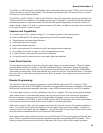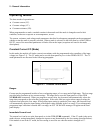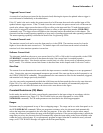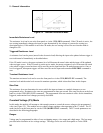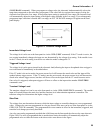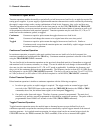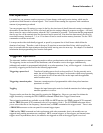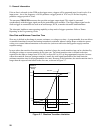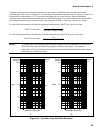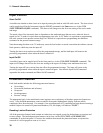General Information - 2
23
Triggered Current Level
A current level can be preset (stored in the electronic load) allowing the input to be updated when a trigger is
received instead of immediately as described above.
If the CC mode is the active mode, the preset current level will become the actual value and the input will be
updated when a trigger occurs. If the CC mode is not the active mode, the preset current level will become the
actual value when a trigger occurs but there will be no effect on the input until the CC mode becomes active.
Once a level is triggered, subsequent triggers will have no effect on the input unless another CURR:TRIG
command is sent. The trigger sources available to the electronic load are described later in this chapter. The
electronic load has a status reporting capability to keep track of pending triggers and other operating conditions.
The status reporting capability is described in detail in the Programming Guide.
Transient Current Level
The transient current level can be set at the front panel or via the GPIB. The transient current level can be
higher or lower than the main current level. The module input will switch between the main level and the
transient level when transient operation is turned on.
Software Current Limit
The electronic load allows the user to set a current limit (0 to 102% of full scale) for each module via the GPIB
(CURR:PROT command) which will shut down the input if the current limit is exceeded beyond a
programmable time delay. Note that the software current limit is in effect for any mode of operation (not just
the CC mode). The software current limit feature is described later in this chapter under Protection Features.
Slew Rate
The current slew rate determines the rate at which the input current to a module changes to a new programmed
value. Current slew rates are programmed in amperes per second. Slew rates can be set at the front panel or via
the GPIB (CURR:SLEW command). The programmed slew rate remains in effect for the immediate, triggered,
and transient level changes previously described.
Any slew rate can be programmed provided that it falls between the fastest and the slowest slew rates shown in
Figure 2-8A. If a value is programmed that is outside these limits, the module will automatically adjust the
programmed value to either the fastest or the slowest slew rates shown in the figure.
Constant Resistance (CR) Mode
In this mode, the module will sink a current linearly proportional to the input voltage in accordance with the
programmed resistance (see Figure 2-2). The CR mode can be set at the front panel or via the GPIB
(MODE:RES command). The CR mode parameters are described in the following paragraphs.
Ranges
Resistance may be programmed in any of four overlapping ranges. The range can be set at the front panel or via
the GPIB (RES:RANG command). When you program a resistance value, the electronic load automatically
selects the range that corresponds to the value that you program. If the value falls in a region where ranges
overlap, the electronic load selects the range with the highest resolution. If the present input setting is outside the
range that you select, the electronic load will automatically adjust the input setting to the closest available value
within the newly selected range. If you subsequently program an input value that is outside the newly selected
range, an OUT OF RANGE message will appear on the front panel display.



